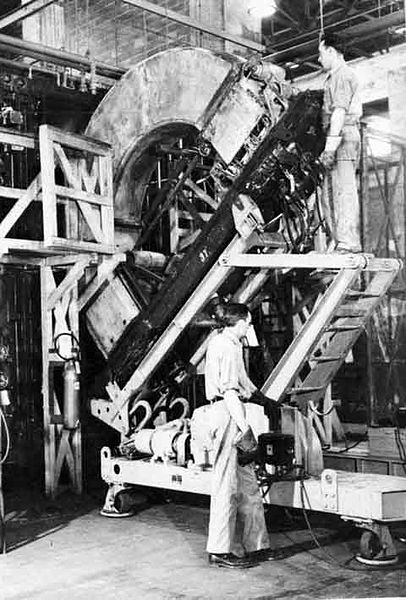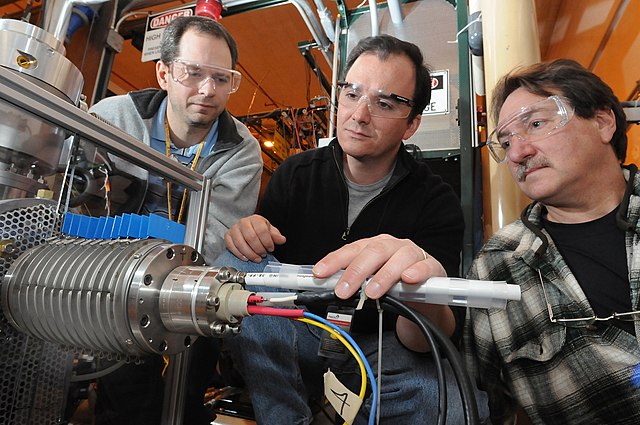Aerosol mass spectrometry
Aerosol mass spectrometry is the application of mass spectrometry to the analysis of the composition of aerosol particles. Aerosol particles are defined as solid and liquid particles suspended in a gas (air), with size range of 3 nm to 100 μm in diameter and are produced from natural and anthropogenic sources, through a variety of different processes that include wind-blown suspension and combustion of fossil fuels and biomass. Analysis of these particles is important owing to their major impacts on global climate change, visibility, regional air pollution and human health. Aerosols are very complex in structure, can contain thousands of different chemical compounds within a single particle, and need to be analysed for both size and chemical composition, in real-time or off-line applications.
NOAA's Particle Analysis by Laser Mass Spectrometry instrument aboard the NASA WB-57 high-altitude research aircraft.
Mass spectrometry (MS) is an analytical technique that is used to measure the mass-to-charge ratio of ions. The results are presented as a mass spectrum, a plot of intensity as a function of the mass-to-charge ratio. Mass spectrometry is used in many different fields and is applied to pure samples as well as complex mixtures.
Discovery of Neon Isotopes
Replica of F.W. Aston's third mass spectrometer
Calutron mass spectrometers were used in the Manhattan Project for uranium enrichment.
Surface ionization source at the Argonne National Laboratory linear accelerator





